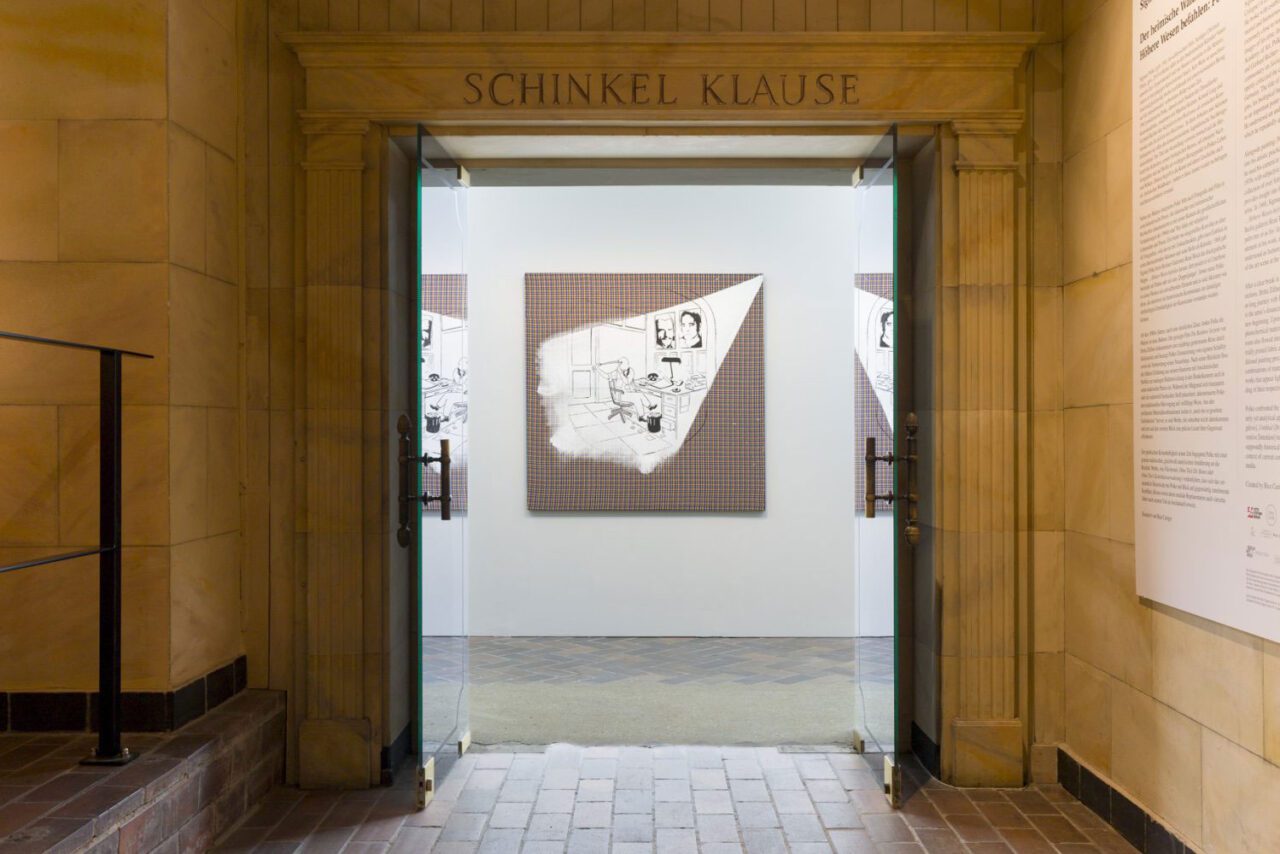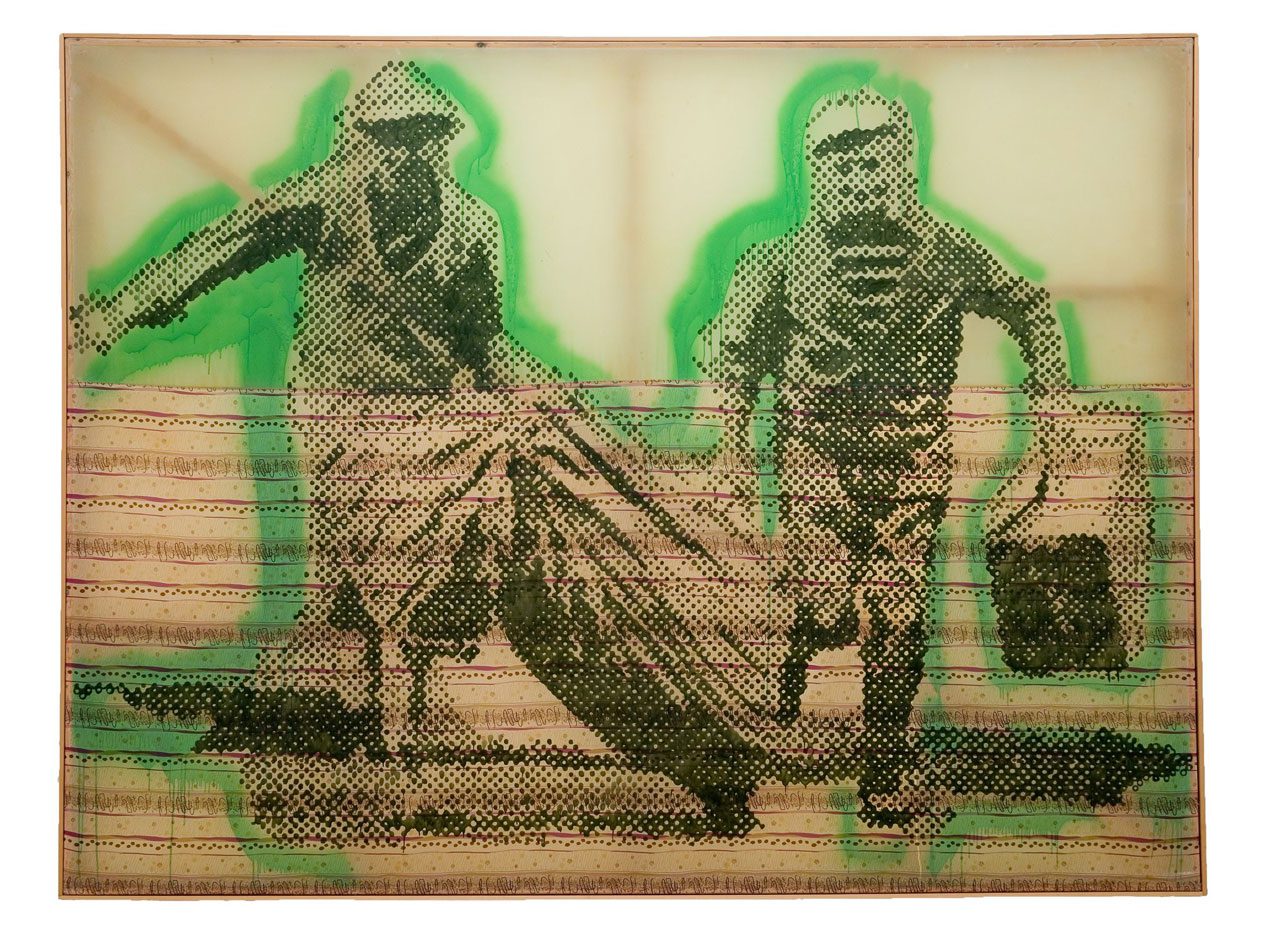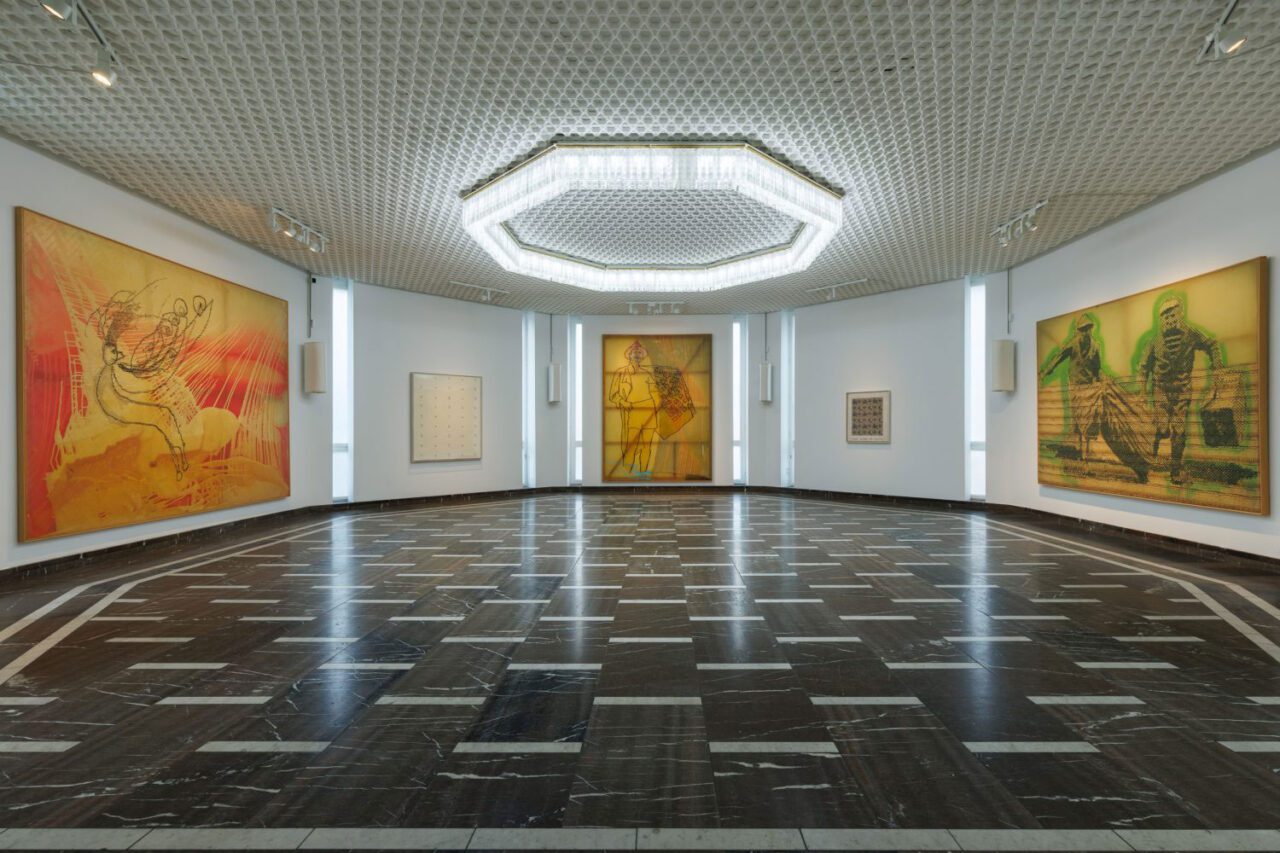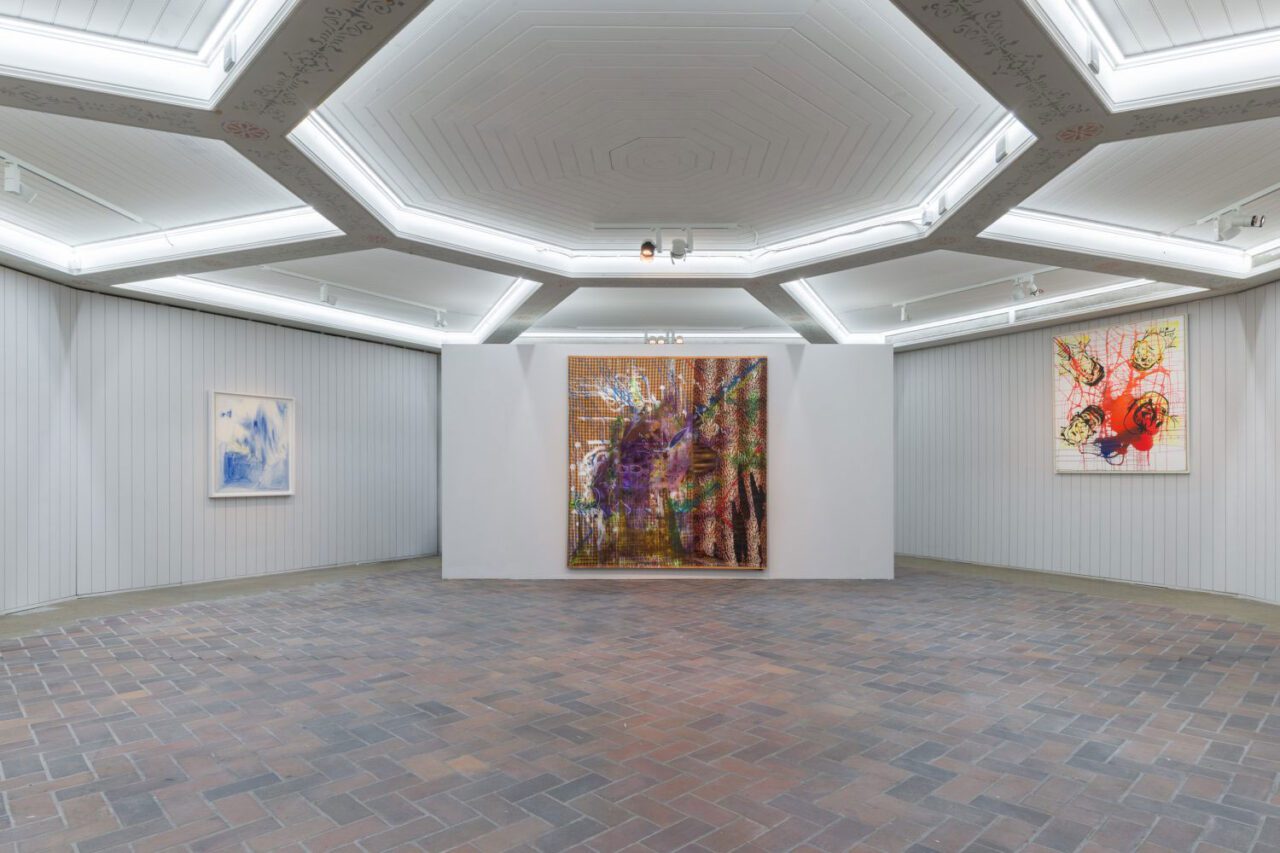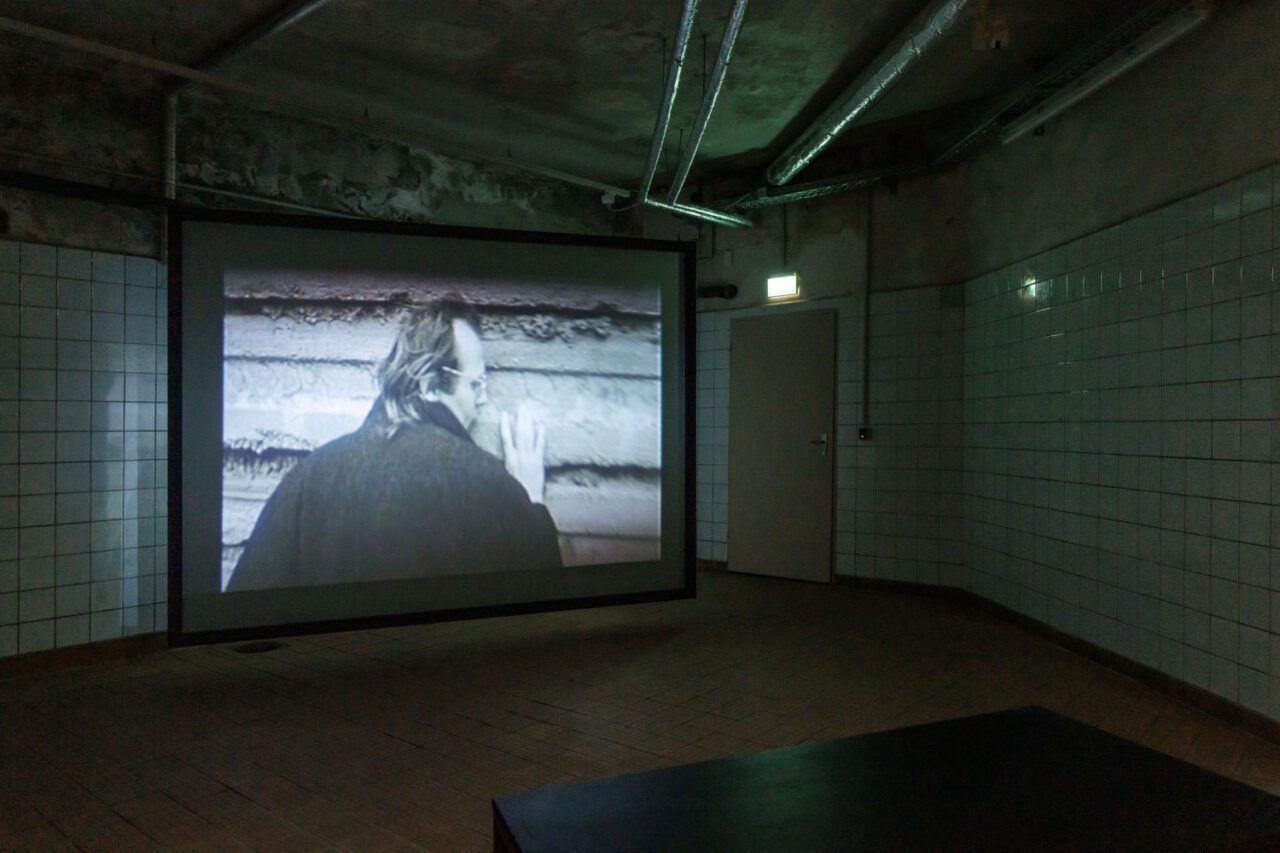PRESENTATION: Sigmar Polke-The Native Forest Floor
![Sigmar Polke, Untitled (Sicherheitsverwahrung) [Preventive Detention], 1979, Dispersion, spray paint, safety pins, razor blades, brooch, sweets on decorative fabric, 130 x 110 cm; Collection Musée d‘Art Toulon, France, ©The Estate of Sigmar Polke/ VG Bild-Kunst, Bonn 2024](http://www.dreamideamachine.com/web/wp-content/uploads/2024/10/00-25.jpg) Born in the Silesian town of Oels, and growing up in both East and West Germany, Sigmar Polke was one of the artists of the 1960s who dealt with the collective trauma of the post-war generation. He confronted the political crisis of his time with a genuinely painterly, yet highly analytical approach to reality, with the effect that thirteen years after his death, these supposedly historical works are still highly topical, eerily reflecting today’s conflicts, crises and their representation in the media. Known for his witty mental agility and investigations of the materiality of art, Polke’s entire œuvre bears witness to an inimitable personal and artistic love of freedom, without ever denying his belief in the great communicative relevance of art.
Born in the Silesian town of Oels, and growing up in both East and West Germany, Sigmar Polke was one of the artists of the 1960s who dealt with the collective trauma of the post-war generation. He confronted the political crisis of his time with a genuinely painterly, yet highly analytical approach to reality, with the effect that thirteen years after his death, these supposedly historical works are still highly topical, eerily reflecting today’s conflicts, crises and their representation in the media. Known for his witty mental agility and investigations of the materiality of art, Polke’s entire œuvre bears witness to an inimitable personal and artistic love of freedom, without ever denying his belief in the great communicative relevance of art.
By Efi Michalarou
Photo: Schinkel Pavillon Archive
The title of the exhibition “The Native Forest Floor. Higher Powers Command: Show Polke!”, featuring over 40 works from renowned international collections by Sigmar Polke should be understood both figuratively and literally, referring to the artist’s life and career which was so intertwined with the postwar realities of both East and West Germany. Polke’s connection to Berlin and its divided history is explored in the films on show. Besides important paintings, a collection of photographs from the 1960s/70s—the majority of which are in fact unique—are shown here for the very first time. They yield fascinating insights into the vibrant youth movements of the time, and the fundamental unmooring of the German postwar status quo that these movements set in motion. Furthermore, they serve as touching testimonies of an individual navigating both turmoil and joy with great sensitivity. Sigmar Polke’s entire body of work reflects an unparalleled personal and artistic commitment to freedom, while consistently affirming his belief in the profound communicative power of art. From an early age, Polke had developed a keen interest in found images, their circulation, legibility and impact on the public imagination. In 1963, as response to the socialist GDR art of the time, the student Polke, together with fellow artists Manfred Kuttner, Konrad Lueg and Gerhard Richter, proclaimed the artistic movement “Kapitalistischer Realismus” [Capitalist Realism], which later became known as German Pop. The booming economy of West Germany and the accompanying post-war bourgeois idyll had created novel, consumerist imagery, which Polke playfully and presciently incorporated into his art. While anchoring his pictorial sources in the reality of mass-media, he ‘alchemically’ steered the painting process in new directions, thus yielding insights far beyond modernity into both history and the future. Among the works of the exhibition are: ” Mu nieltnam netorruprup” (1975): The Kunsthalle Kiel used this print as a poster for an exhibition of the same name in 1975. The title reads backwards as part of a line from the children’s song “Ein Männlein steht im Walde” which is supposedly about an fly agaric mushroom. From the 1970s onward, fly agaric mushrooms recur in Polke’s photographs and prints, a period in which he developed a fascination with non-European cultures, the occult, and the expansion of consciousness through psychoactive substances. In the 1970s, recipes for making psychedelics from the skin of the fly agaric mushroom were part of the scene’s knowledge. “Untitled (Dr. Bonn)” (1978): In the late 1970s, Polke’s work was strongly characterized by a humorous and at the same time socially critical view on political situations. He was particularly skeptical of state authorities and institutions. A white cone of light made of emulsion paint illuminates an office scene from the right on a stretched woolen fabric. A faceless figure sits at a desk with a slingshot aimed at himself. Above him hang the wanted pictures of Jan-Carl Raspe and Andreas Baader, members of the extreme left-wing militant group Red Army Faction (RAF), clearly recognizable in contrast to the anonymity of the figure. The Raster] from the fabric alludes to the so-called dragnet, a controversial police investigative procedure that was developed in West Germany in the 1970s as the basis for the search for members of the RAF. The search dominated the news media at the time, and the mug shots became etched in the collective memory. The slingshot refers to the so-called Night of Death on October 18, 1977 in the Stuttgart-Stammheim prison, in which Raspe and Baader, as well as Gudrun Ensslin, died and which led to speculation about the actual cause of death.
“Untitled (Lapis Lazuli)” (1992 or 1998): As a playful quotation from gestural painting, Lapis Lazuli demonstrates Polke’s tireless joy in experimenting with different techniques. This work, one of Polke’s many ‘material paintings,’ is one of the alchemical experiments in painting that culminated in the creative phase of the 1980s. The deep blue pigment of the precious stone lapis lazuli had already been used in the Renaissance, as had tempera, a binding of pigments with a water-oil mixture, and testifies to Polke’s interest in the history of painting and his own unique approach to it, which is broken here by the use of synthetic resin. Polke uses the title to foreground the material, thus leaving room for associations. “Untitled (Sicherheitsverwahrung)” (1979): This comic-like figurative work was created in two versions. It depicts a woman trying to free herself from the violent grip of the police and seems to step out of the picture. Safety pins, brooches, gold chains adorn to a floral embroidery that is used as the canvas are recognizable as objects attributed to women, which, in juxtaposition with the self-confident figure dressed in jeans and a shirt, question the social role of women in the 1970s and 1980s. The Women’s Movement, which became visible to the public through worldwide protests, shaped a new wave of feminism and is also reflected in Polke’s painting. “Carl Andre in Delft” (1968): Underneath a patterned fabric rectangle depicting the faience tiles known as Delft Blue, Polke wrote the title in block letters, as if on a didactic wall chart. Delft Blue, once a status symbol in the seventeenth century and then forgotten, experienced a revival in the 1960s, finding its way into bourgeois households. On October 21, 1967, Konrad Fischer opened his exhibition space in a narrow passageway in Düsseldorf with an exhibition dedicated to the American artist Carl Andre, who was still largely unknown in Europe at the time and would later become known worldwide as a pioneer of minimal art. On display was the work 5 x 20 Altstadt Rec- tangle, which consisted of a total of 100 steel plates that, like Polke’s work, formed a rectangle. During this time, Polke met Carl Andre personally, and they traveled together to Brussels. Polke’s painting is a response to Andre’s exhibition as well as an ironic commentary on both minimal art and the philistinism of the 1960s. “Untitled (Dr Pabscht het z´Schpiez s´Schpäckbschteck z´schpät bschteut)” (1975): The painting with a Swiss tongue-twister as its title, which literally means that the Pope in Spiez ordered his bacon cutlery too late, shows two crossed spoons protruding from an open cutlery box. In 1991, the painting was reproduced as a multiple (edition object) in a then innovative four-color inkjet print on Vinyl. Polke found the motif in the collage novel “Une semaine de bonté” by the Surrealist artist Max Ernst, published in 1934. While Ernst dealt with themes such as jealousy, murder, and death in his collages, Polke chose a trivial detail from these and humorously linked it to the Swiss idiom. With the hanging suggested by the artist, the right angle is placed on the corner, and the picture suddenly reveals many more right and acute angles, in a composition that playfully references Mondrian. “Flüchtende”: (1992): This painting from 1992, one of Polke’s best-known political images, was inspired by a photography prize awarded on the occasion of German reunification. It depicts a couple on the run, packed with the bare necessities of life, in a greatly magnified halftone grid. On the back of the canvas, Polke outlined the couple with green emulsion paint to bring them back into focus. Driven by great haste, the two are representative of the countless nameless refugees around the world who are forced to leave their homeland because of war and repression, persecution and natural disasters. Even after more than thirty years, this work has lost none of its relevance.
Photo: Sigmar Polke, Untitled (Sicherheitsverwahrung) [Preventive Detention], 1979, Dispersion, spray paint, safety pins, razor blades, brooch, sweets on decorative fabric, 130 x 110 cm; Collection Musée d‘Art Toulon, France, ©The Estate of Sigmar Polke/ VG Bild-Kunst, Bonn 2024
Info: Curator: Bice Curiger, Curatorial team: Klara Hülskamp, Dr. Luisa Seipp, Christina Maria Ruederer, Margaux Bonopera, Schinkel Pavillon e.V., Oberwallstraße 32, Berlin, Germany, Duration: 12/9/2024-2/2/2025, Days & Hours: Thu=Fri 14:00-19:00, Sat-Sun 11:00-19:00, http://schinkelpavillon.de/
